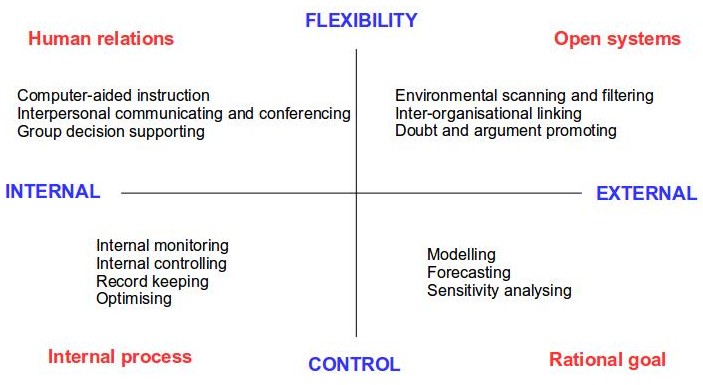
Open systems (external, flexibility)
In an open system culture people focus on the external environment, seeing it as a vital source of ideas, energy and resources. They also see it as complex and turbulent requiring entrepreneurial visionary leadership and responsive behaviour. Key motivating factors are growth, stimulation, creativity and variety. Examples include start-up firms and business developing units-organic flexible operation.
Rational goal (external, control)
In a rational goal culture members see the unit has been a rational, efficiency seeking operation. They define effectiveness in terms of production or economic goals that meet familiar and stable external requirements. Managers create structural to deal efficiently with this stable outside world. Leadership tends to be directive, goal-oriented and functional. Motivating factors include competition and achieving targets. Examples are large production or service activities in established organisations-mechanistic, rule-driven.
Internal process (internal, control)
Members of an internal process culture pay little attention to the external world and focus instead on internal issues. Their goal is to make the unit efficient, stable and controlled. Goals and known, tasks repetitive and methods stress specialisation, rules, procedures. Leaders tend to be conservative and cautious, emphasizing technical issues. Key motivating factors include security, stability and order. Examples include utilities and public authorities, and internal administrative departments such as payroll or tax-cautious, suspicious of change.
Human Relations (internal, flexibility)
People in a human relations culture emphasize the value of informal, interpersonal relations rather than formal structures. They place high value on maintaining the organisation in the well-being of its members, and define effectiveness in terms of developing people in their commitment. Leaders tend to be participative, considerate and supportive. Motivating factors tend to be attachment, cohesiveness and membership. Examples include professional service firms and some internal support functions.
